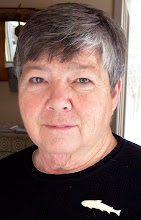TO PROTEST OR NOT TO PROTEST, THAT IS THE QUESTION
I grew up in total racial segregation. No one in my immediate world talked about blacks because we were too poor to hire them and so, with nearly complete segregation, they simply didn’t exist except in the movies.
I don’t remember my parents being particularly interested in race one way or another. Mom never said anything about people of color that I ever heard. Dad was surely racist but he had tremendous admiration for athletes and musicians and on those playing fields, he was totally color blind.
I never heard of the 1920 Tulsa Greenwood Riots until about 20 years ago.
Detailed events are explained on several web sites. But here’s the short version:
There existed in Tulsa, Oklahoma, a black neighborhood of more than 2000 homes and business. It was called the “Black Wall Street.” Greenwood was one of the wealthiest black communities in the United State. Because of segregation, it encapsulated a city within a city - retail stores, banks, a hospital, school system - and it’s inhabitants worked in “service” to the white community but also they included the professionals that served their own.
A 19 year old black boy whose grandparents lived in Greenwood was accused of “assaulting” a white girl in a downtown office building and on very shaky evidence, was arrested for the crime. One of Tulsa’s sensationalist newspapers reported the crime the following day with blazing headlines and used the L-word: “lynch.”
What followed were a series of missteps that erupted in an invasion of Greenwood by thousands of whites on foot, in cars and via private airplanes (!) indiscriminately shooting and setting fires. When trouble first began and blacks called Tulsa police for help they were told that the police were busy on other calls. The State police finally arrived and eyewitnesses claim they joined the white rampage.
Estimates of deaths range from a few dozen to thousands. Blacks were driven from their homes and when the smoke and noise died down, as many as 5000 survivors were rounded up and held in detention centers while looters and vandals finished off Greenwood, stealing whatever was worth taking and setting fire to everything else. When mayhem abated, to make certain that Greenwood was really dead, the entire area was rezoned “commercial” - no housing allowed.
And that was the end of the story - no one EVER talked about it. But in 1996, the 75th anniversary of Greenwood, the incident was reported in the Tulsa World with interviews by several elderly survivors. Shining a light on the abomination led to a State investigation commission that reported full findings in 2001.
I wish I could say that what happened next was a wonderful example of racial healing and reparation. But I can’t. 300 college scholarships were set aside for Greenwood descendants. A historic marker was installed in Tulsa and a memorial park built. The neighborhood isn’t too far away from University of Tulsa; today it looks like a cleaned-up university city project including a pretty little park. I don’t know where black people live in Tulsa but it is NOT Greenwood.
Now we in Rochester are debating a couple of 100 year old paintings on a carousel. Really? Folk art is never politically correct so do we erase it all? Put it all in a glass case somewhere (where elitists have greatest access)? What about other art expressions? Movies…Shirley Temple tap dancing with Bo Jangles? What to do? Atlanta burning while “I don’t know nothin’ about birthin’ no babies!” The words in “ShowBoat” - a historical lynchpin in stage musicals - have been changed - several times! - to make them acceptable via today’s standards and the power of the original is diminished.
I am overwhelmed by the inhumanity perpetrated in my home town but my current home town has long-standing, alarming injustices. A couple of 100 year old paintings on a carousel don’t begin to touch the conversation we should be having.



No comments:
Post a Comment